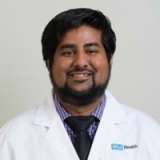Outreach Research
Electrophysiology of Nodding Syndrome (NS)

Dr. Rajarshi Mazumder from UCLA travelled to a remote rural village in northern Uganda, which is recovering from two decades of civil war, to characterize the electrophysiology of Nodding Syndrome (NS) using Lifeline Neurodiagnostic’s ambulatory EEG system. NS is an unexplained epileptic encephalopathy affecting children, endemic in eastern sub-Saharan Africa and characterized by the pathognomonic features of rhythmic head nodding triggered by eating or other sensory stimuli, behavioral disturbances, and developmental delay. At present, the diagnosis of NS relies solely on clinical semiology, and there is a paucity of objective laboratory or neurophysiological biomarker. The researchers from UCLA will use the ambulatory EEG system to conduct a longitudinal extended EEG monitoring in this hard to reach remote rural community in east Africa to further define the novel disease. Dr. Dawn Eliashiv, who is the principal investigator of the project, and Dr. Jerome Engel Jr. at UCLA are mentoring Dr. Mazumder.
Neurocysticercosis
Neurocysticercosis (NCC), a parasitic infection that invades the brain, is endemic in large parts of Latin America, Africa, and Southeast Asia. In these areas it is the most common cause of epileptic seizures and, presumably, epilepsy, but the mechanisms involved are unknown. Recent research suggests that NCC can cause hippocampal sclerosis, which is also the most common pathological disturbance underlying drug resistant epilepsy worldwide. If NCC causes hippocampal sclerosis, it will provide an opportunity to study the mechanisms responsible for the development of this condition in patients, and to devise approaches to prevention. UCLA researchers, Drs. Dawn Eliashiv and Jerome Engel, Jr., are collaborating with Dr. Hector Garcia of Peru, and Dr, Oscar Del Brutto of Ecuador, who each have large populations of patients with NCC, to confirm the relationship between this disease and hippocampal sclerosis. This work is supported by a grant from the National Institutes of Health.